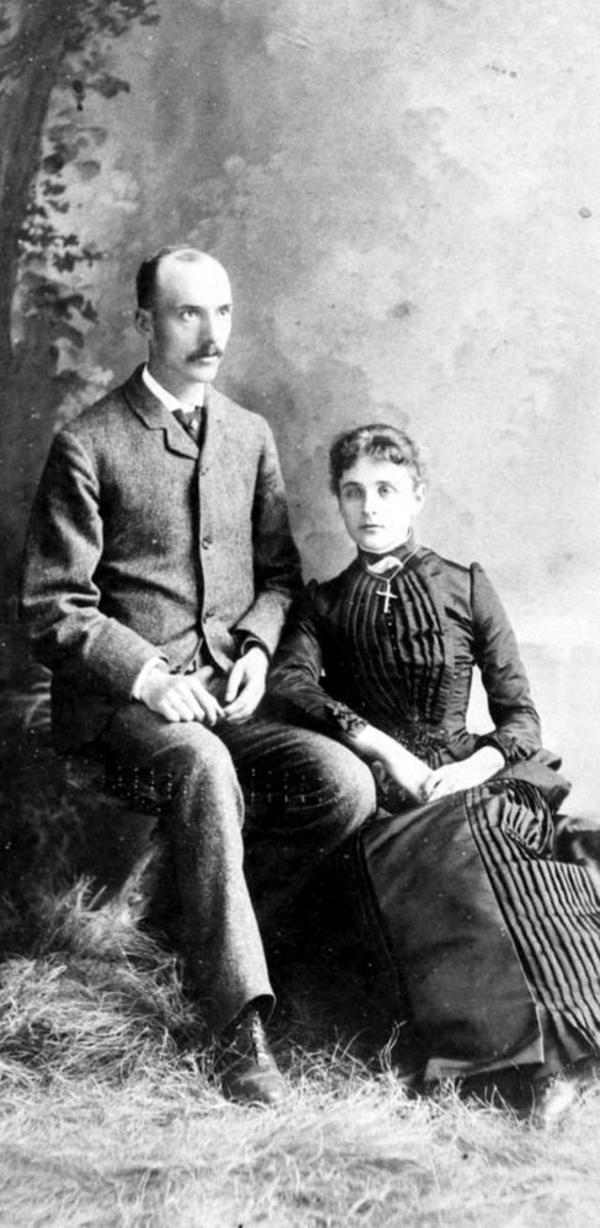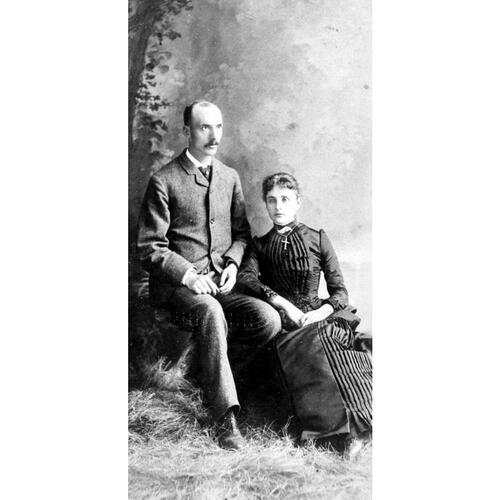
Source: Link
BENTLEY, RICHARD IRVINE, physician and asylum superintendent; b. 1 Jan. 1854 in Toronto, son of Dr John Bentley and Catherine — of Newmarket, Upper Canada; m. 30 July 1884 Mary Amy Woods in New Westminster, B.C., and they had at least one son and one daughter; d. 1909 in Port Moody, B.C.
Richard Irvine Bentley was first educated in Newmarket and subsequently received medical training at Trinity College, graduating from the University of Toronto at the bottom of his class in June 1876. Unlike some of his more successful classmates, Bentley did not go to Europe for post-graduate training. Instead he travelled to Nazira, India, where he served from 1878 as the medical officer for the Assam Company tea plantation. Four years later he returned to Canada with the intention of settling into a private practice at New Westminster, B.C. His attempts to open his own practice failed, however, owing to a surplus of physicians in the area. He was appointed medical officer to the provincial Asylum for the Insane and surgeon of the Royal Columbian Hospital in June 1883, and medical officer to the New Westminster Gaol in January 1885. A commission of inquiry into the management of the asylum in 1882 had recommended the appointment of a resident medical superintendent to ensure “regularity, good order, economy and . . . efficient discipline.” Bentley was named to the post, and in January 1885 he and his recent bride, the daughter of Archdeacon Charles Thomas Woods, moved into the new residence constructed for the superintendent on the asylum grounds.
Bentley was given sole authority over the treatment of patients, the internal management of the asylum, and all matters relating to staffing and discipline. Under his supervision a matron, Flora Amelia Ross*, had charge of the women’s wards. Unlike other provinces, British Columbia had at the time no movement for reforming the treatment of lunatics, and superintendents there were isolated from their colleagues and the debates within psychiatry in the rest of the country. Bentley believed that little could be done for his patients medically, and endeavoured simply to ameliorate their mental condition by keeping them busy working on the grounds of the asylum. Although improvements were made to the asylum’s appearance, the wards remained woefully inadequate. Bentley was particularly disturbed by the lack of separate accommodation for the Chinese. Reflecting contemporary racial concerns in the province, he argued that “this undesirable class” should be segregated, partly “on account of the dislike of the white patients and their friends towards having the two races housed together,” but also in order to reduce costs by confining Chinese patients to substandard facilities within the institution. When extensive additions were made to the asylum in 1889–90, Chinese patients were transferred to a separate ward.
Since the asylum population had grown by 1890 to over a hundred patients, Bentley petitioned the government to be relieved of his duties at the Royal Columbian Hospital and the New Westminster Gaol, in order to devote his time more fully to the asylum. The province granted his request, and he left the jail in 1891 and the hospital the following year. In 1893 a commission of inquiry into asylum affairs concluded that Bentley still did not adequately supervise either his staff or his patients. Though he stated that he visited the wards at least once a day, both patients and attendants affirmed that, in fact, he seldom appeared on the wards more than four times a week and had very little contact with his charges even during these times. The commission also discovered that Bentley’s apparent inability to control his staff had resulted in widespread abuse of patients. It decided that Canadian and British patients at the Asylum for the Insane should be granted a class of accommodation comparable to that given their counterparts in England, and since Bentley appeared to be unable to ensure such care, it called for his resignation. On 24 Dec. 1894 he complied but protested to the provincial secretary, James Baker, against what he saw as “erroneous and damaging statements” in the report.
After his resignation from the asylum, Bentley tried, not altogether successfully, to establish a stable medical practice. He and his wife and two children followed the Alaska gold-rush and then moved to Slocan, B.C., in 1897, where he provided medical services to the mining community. The family finally settled in Port Moody in 1907; Bentley died there two years later.
ACC, Diocese of New Westminster Arch. (Vancouver), Holy Trinity Cathedral (New Westminster, B.C.), RBMB, 30 July 1884, 25 Oct. 1885, 6 Dec. 1887. BCARS, GR 482; GR 693; GR 731. City of Vancouver Arch., Add. mss 151. NA, RG 31, C1, 1891, New Westminster. Univ. of Toronto Arch., P78-0158 (Univ. of Toronto, class and prize lists), 1872–76. B.C., Legislative Assembly, Sessional papers, annual reports of the medical superintendent, 1885, 1889–90. T. J. W. Burgess, “A historical sketch of our Canadian institutions for the insane,” RSC Trans., 2nd ser., 4 (1898), sect.iv: 3–122. Canadian men and women of the time (Morgan; 1898).
Cite This Article
Mary-Ellen Kelm, “BENTLEY, RICHARD IRVINE,” in Dictionary of Canadian Biography, vol. 13, University of Toronto/Université Laval, 2003–, accessed March 28, 2025, https://www.biographi.ca/en/bio/bentley_richard_irvine_13E.html.
The citation above shows the format for footnotes and endnotes according to the Chicago manual of style (16th edition). Information to be used in other citation formats:
| Permalink: | https://www.biographi.ca/en/bio/bentley_richard_irvine_13E.html |
| Author of Article: | Mary-Ellen Kelm |
| Title of Article: | BENTLEY, RICHARD IRVINE |
| Publication Name: | Dictionary of Canadian Biography, vol. 13 |
| Publisher: | University of Toronto/Université Laval |
| Year of revision: | 1994 |
| Access Date: | March 28, 2025 |



